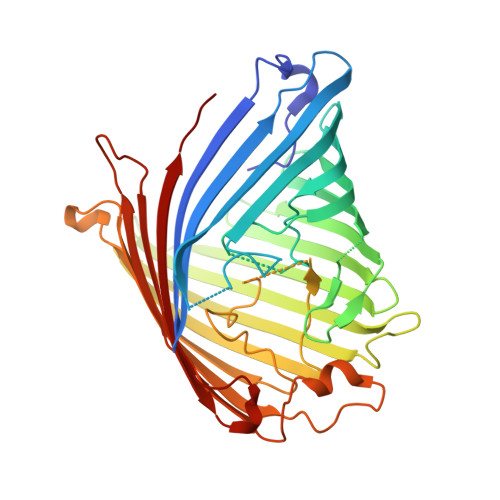Toward Understanding the Outer Membrane Uptake of Small Molecules by Pseudomonas aeruginosa.
Eren, E., Parkin, J., Adelanwa, A., Cheneke, B., Movileanu, L., Khalid, S., van den Berg, B.(2013) J Biological Chem 288: 12042-12053
- PubMed: 23467408
- DOI: https://doi.org/10.1074/jbc.M113.463570
- Primary Citation of Related Structures:
4FMS, 4FOZ - PubMed Abstract:
Because small molecules enter Gram-negative bacteria via outer membrane (OM) channels, understanding OM transport is essential for the rational design of improved and new antibiotics. In the human pathogen Pseudomonas aeruginosa, most small molecules are taken up by outer membrane carboxylate channel (Occ) proteins, which can be divided into two distinct subfamilies, OccD and OccK. Here we characterize substrate transport mediated by Occ proteins belonging to both subfamilies. Based on the determination of the OccK2-glucuronate co-crystal structure, we identify the channel residues that are essential for substrate transport. We further show that the pore regions of the channels are rigid in the OccK subfamily and highly dynamic in the OccD subfamily. We also demonstrate that the substrate carboxylate group interacts with central residues of the basic ladder, a row of arginine and lysine residues that leads to and away from the binding site at the channel constriction. Moreover, the importance of the basic ladder residues corresponds to their degree of conservation. Finally, we apply the generated insights by converting the archetype of the entire family, OccD1, from a basic amino acid-specific channel into a channel with a preference for negatively charged amino acids.
- Program in Molecular Medicine, University of Massachusetts Medical School, Worcester, Massachusetts 01605, USA.
Organizational Affiliation:

















